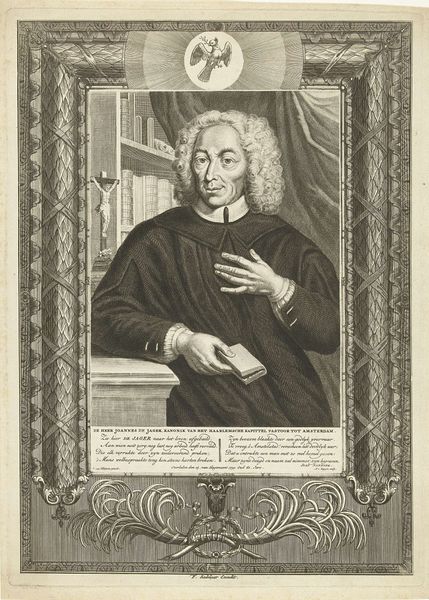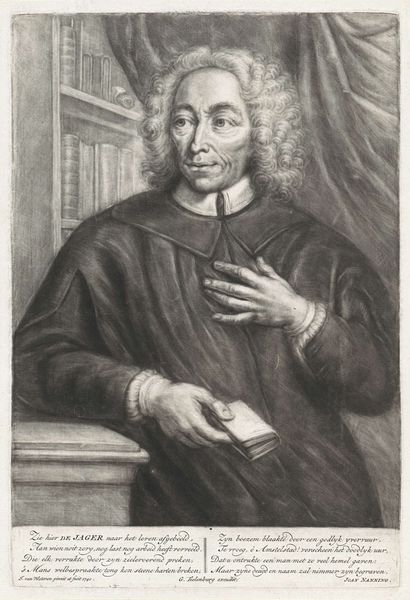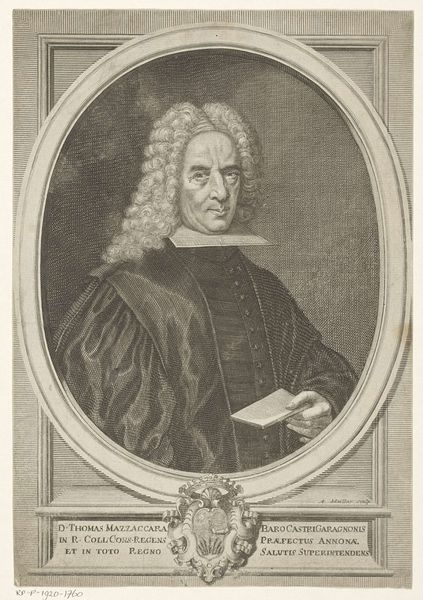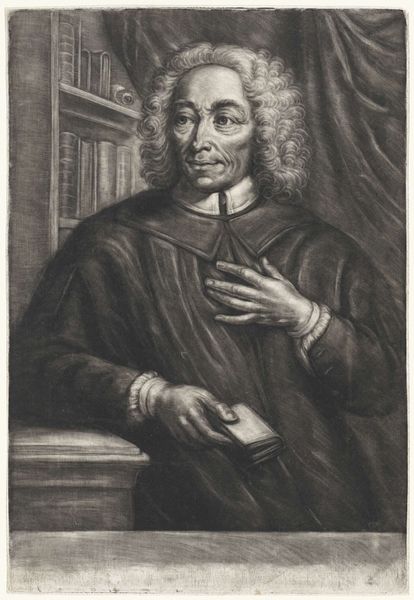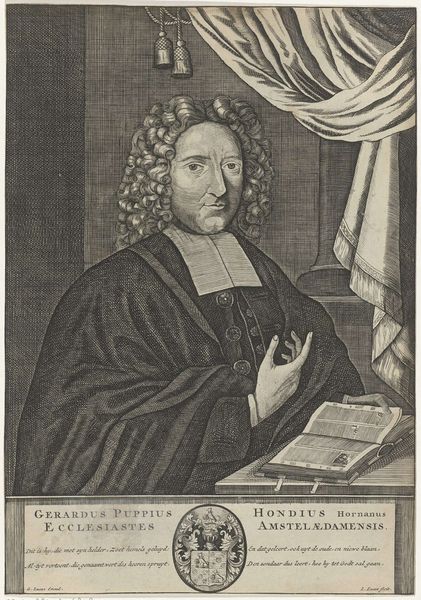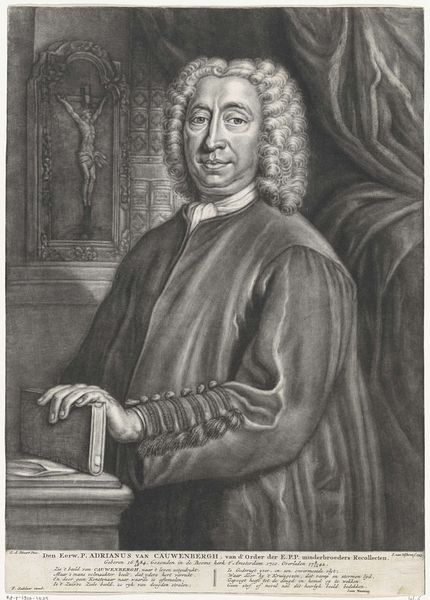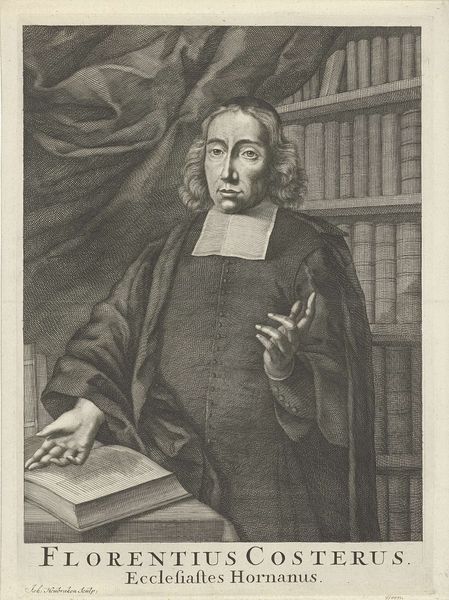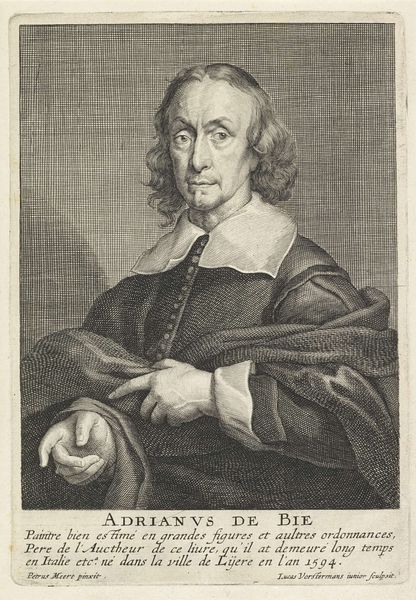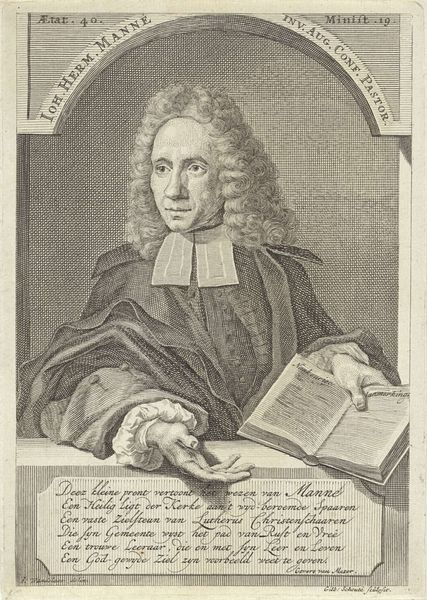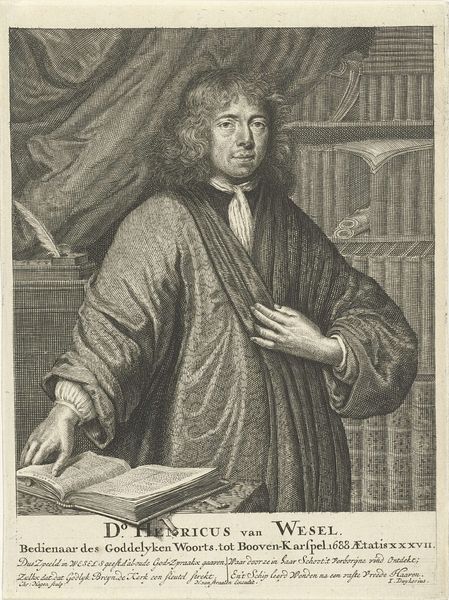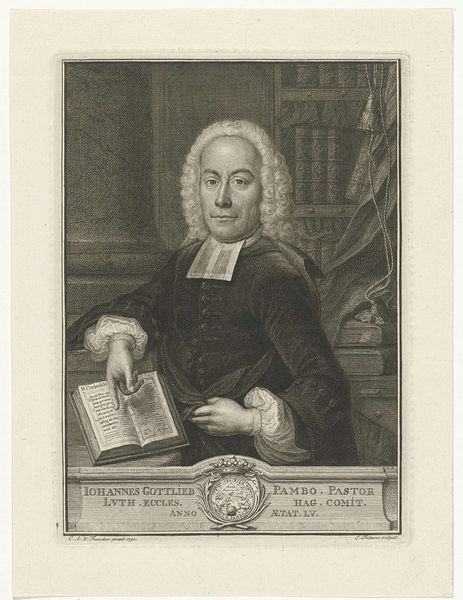
engraving
#
portrait
#
baroque
#
history-painting
#
academic-art
#
engraving
Dimensions: height 280 mm, width 165 mm
Copyright: Rijks Museum: Open Domain
Editor: Here we have Andries van Buysen the elder's "Portret van Joannes de Jager," made between 1739 and 1741. It's an engraving currently held in the Rijksmuseum. What strikes me first is the formality of the composition, particularly how the subject's gaze directs the viewer, and also the contrast between the dark robe and the elaborate white wig. What do you see in this piece? Curator: Immediately, I’m drawn to the interplay of textures and lines. Notice how the tight, almost frenetic lines used to depict the wig contrast with the smoother, more deliberate strokes used for the face and the robe. This deliberate differentiation creates a visual hierarchy, guiding our eye through the composition. Editor: I see that now. The crisp lines around the face emphasize its importance. But what about the positioning of the subject? Leaning against a table with a book? Curator: Observe how the artist has carefully structured the space. The bookshelf and crucifix in the background aren't merely decorative; they’re essential compositional elements. The vertical lines of the bookshelf juxtapose with the rounded form of the wig, and the crucifix subtly counterbalances the intellectual aura suggested by the book. Furthermore, consider how the hand gestures guide the viewer back into the composition. What impact does the subject's specific pose have, for example, hand on heart, small book on hand, what do you interpret from the pose, or visual expression and attitude? Editor: Interesting. I hadn't thought about the crucifix that way; I was focused on it being a religious signifier. This close attention to the lines and structure gives a completely different sense of the work. Curator: Indeed. By isolating and analyzing these formal elements, we can decipher the artist's intentions and achieve a deeper understanding of the work's aesthetic complexities. Editor: So, it’s not just *what* is depicted, but *how* it's depicted. Thank you, I appreciate your help seeing it in that light. Curator: A crucial distinction. Glad to share my perspective on formal elements.
Comments
No comments
Be the first to comment and join the conversation on the ultimate creative platform.

